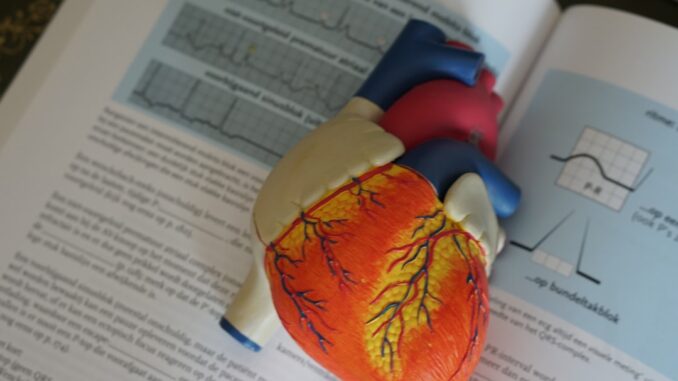
In the high-stakes environment of pediatric intensive care units (ICUs), the ability to predict cardiac arrest (CA) before it occurs can be a game-changer. Early intervention not only saves lives but also improves long-term outcomes for young patients. A recent study introduces PedCA-FT, a transformer-based framework that fuses tabular and textual data from electronic health records (EHRs) to predict pediatric CA risk.
The Challenge of Early Detection
Cardiac arrest in children often follows a period of physiological instability, making early detection challenging. Traditional monitoring systems may not capture the complex interactions of risk factors leading up to an arrest. This gap underscores the need for advanced predictive models that can analyze high-dimensional data and identify subtle patterns indicative of impending CA.
Introducing PedCA-FT
PedCA-FT stands out by integrating two distinct views of EHR data:
- Tabular View: Structured data such as vital signs, laboratory results, and demographics.
Healthcare data growth can be overwhelming scale effortlessly with TrueNAS by Esdebe.
- Textual View: Unstructured clinical notes and narratives.
By employing dedicated transformer modules for each modality, PedCA-FT captures complex temporal and contextual patterns, leading to robust CA risk estimates. This multimodal fusion approach allows the model to fully exploit the interactions of high-dimensional risk factors and their dynamics. (arxiv.org)
Superior Performance
When evaluated on a curated pediatric cohort from the Children’s Healthcare of Atlanta Cardiac Intensive Care Unit (CHOA-CICU) database, PedCA-FT outperformed ten other artificial intelligence models across five key performance metrics. Notably, it identified clinically meaningful risk factors, providing insights that can guide clinical decision-making. (arxiv.org)
Implications for Pediatric Care
The success of PedCA-FT highlights the potential of multimodal fusion techniques in enhancing early CA detection. By leveraging both structured and unstructured data, healthcare providers can gain a more comprehensive understanding of a patient’s condition, leading to timely interventions and improved patient care.
References
-
Lu, J., Brown, S. R., Liu, S., Zhao, S., Dong, K., Bold, D., Fundora, M., Aljiffry, A., Fedorov, A., Grunwell, J., & Hu, X. (2025). Early Risk Prediction of Pediatric Cardiac Arrest from Electronic Health Records via Multimodal Fused Transformer. arXiv. (arxiv.org)
-
Natarajan, S., et al. (2023). AI tool may predict cardiac arrests in pediatric patients. Medical Xpress. (medicalxpress.com)
-
Addeh, A., Ardila, K., Williams, R. J., Pike, G. B., & MacDonald, M. E. (2025). Direct Estimation of Pediatric Heart Rate Variability from BOLD-fMRI: A Machine Learning Approach Using Dynamic Connectivity. arXiv. (arxiv.org)
-
Perry, T., Zha, H., Frias, P., Zeng, D., & Braunstein, M. (2012). Supervised Laplacian Eigenmaps with Applications in Clinical Diagnostics for Pediatric Cardiology. arXiv. (arxiv.org)
-
Xiang, E., Wang, T., & Poddar, V. (2024). High-Throughput Detection of Risk Factors to Sudden Cardiac Arrest in Youth Athletes: A Smartwatch-Based Screening Platform. arXiv. (arxiv.org)
By embracing such innovative approaches, the medical community can move closer to the goal of preventing pediatric cardiac arrests before they occur, ultimately saving lives and improving the quality of care for young patients.


The multimodal fusion approach of PedCA-FT is compelling. How might this framework be adapted for use in resource-limited settings where access to comprehensive EHR data is a challenge?
That’s a crucial consideration! Adapting PedCA-FT for resource-limited settings is key. One approach could involve prioritizing easily accessible and consistently recorded tabular data like vital signs, while leveraging techniques like transfer learning from larger datasets to compensate for sparser textual data. This would allow the model to make use of more accessible datasets. What do you think?
Editor: MedTechNews.Uk
Thank you to our Sponsor Esdebe
The integration of both tabular and textual data is a significant advancement. What are the challenges in standardizing the unstructured textual data from diverse sources to ensure consistent input for the PedCA-FT model, and how can these be overcome?
That’s a great question! Standardizing textual data is definitely a hurdle. One key challenge is the variability in language and terminology across different clinicians and institutions. We’re exploring techniques like natural language processing (NLP) and controlled vocabularies to map diverse text inputs to a consistent representation for the model. More to come!
Editor: MedTechNews.Uk
Thank you to our Sponsor Esdebe
The application of transformer models to fuse tabular and textual data shows great promise. Beyond cardiac arrest prediction, could this multimodal approach be extended to forecast other critical events in pediatric ICUs, such as severe sepsis or respiratory failure?
That’s an excellent point! Extending the multimodal approach to predict severe sepsis or respiratory failure in pediatric ICUs is a natural next step. We believe the framework’s ability to integrate diverse data types could be valuable in forecasting a range of critical events beyond cardiac arrest. Further research is planned.
Editor: MedTechNews.Uk
Thank you to our Sponsor Esdebe